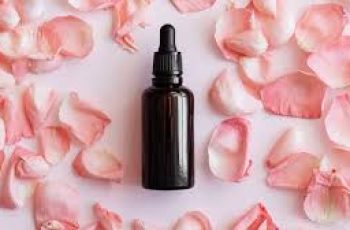
**Can You Mix Azelaic Acid and BHA?**
When it comes to skincare, combining different actives can be a bit of a balancing act. With ingredients like **Azelaic Acid** and **BHA** (specifically **Salicylic Acid**), both offering powerful benefits, it’s natural to wonder if you can use them together without causing irritation or diminishing their effectiveness.
### What is Azelaic Acid?
Azelaic acid is a naturally occurring acid derived from grains like barley, wheat, and rye. It’s often praised for its versatility and gentle exfoliating properties. Key benefits include:
– **Reducing hyperpigmentation**: Azelaic acid helps fade dark spots, melasma, and post-acne marks.
– **Preventing acne**: It unclogs pores, controls excess sebum, and kills acne-causing bacteria.
– **Soothing inflammation**: It’s known for its anti-inflammatory properties, which help calm redness and conditions like rosacea.
– **Exfoliation**: While not classified as an AHA or BHA, azelaic acid still sloughs off dead skin cells to reveal a smoother complexion.
### What is BHA (Salicylic Acid)?
Salicylic acid is the most common BHA (beta-hydroxy acid), and it’s oil-soluble, meaning it can penetrate deeply into the pores to exfoliate and clear out buildup. Benefits of BHA include:
– **Unclogging pores**: Salicylic acid is excellent at dissolving oil and debris trapped in pores, preventing blackheads, acne, and breakouts.
– **Exfoliating the skin**: It helps to remove dead skin cells from the surface, revealing fresher skin.
– **Reducing inflammation**: It’s particularly effective in calming inflammatory skin conditions like acne, reducing redness, swelling, and irritation.
### Can You Use Azelaic Acid and BHA Together?
**Yes, but with caution.** Both azelaic acid and salicylic acid are excellent for treating acne, uneven skin tone, and skin texture, but they work in slightly different ways. Azelaic acid primarily works on the surface of the skin, while salicylic acid can penetrate deeper into the pores.
While it is safe to use both ingredients, **you should not layer them directly on top of each other**. Mixing them together or applying them too close together in your routine can lead to irritation, increased skin sensitivity, and discomfort.
### How to Safely Incorporate Azelaic Acid and BHA in Your Routine:
To avoid irritation, it’s best to **space them out** in your routine. Here are two effective ways to combine these two ingredients:
#### 1. **Alternate Day Usage**
You can use **azelaic acid on one day** and **salicylic acid on the next**. This gives your skin a chance to absorb and work with each ingredient without overwhelming the skin barrier.
– **Morning**: Use azelaic acid in the morning for its brightening and anti-inflammatory benefits.
– **Evening**: Use salicylic acid in the evening to exfoliate and prevent clogged pores, particularly if you’re dealing with acne.
#### 2. **Time-Based Usage**
If you prefer to use both ingredients in the same day, you can **apply azelaic acid in the morning** and **salicylic acid in the evening**. This gives your skin time to adjust to each active’s pH level and reduces the chances of irritation.
### Why Not Mix Azelaic Acid and Salicylic Acid?
The reason you should avoid mixing azelaic acid and salicylic acid directly comes down to **skin irritation**. Here’s why:
– **Penetration Depth**: Salicylic acid works deeper in the pores, whereas azelaic acid operates more on the surface. When used together, the combination of deep pore penetration (salicylic acid) and surface exfoliation (azelaic acid) can cause over-exfoliation and irritation.
– **Acid Overload**: Both are acids, and using them too closely together can lead to excessive exfoliation. This can strip the skin of its natural oils, weaken the skin barrier, and lead to dryness, redness, or sensitivity.
### What Should You Not Mix with BHA?
There are several ingredients that shouldn’t be mixed with BHA (salicylic acid) to avoid irritation and optimize results:
1. **AHAs (Alpha-Hydroxy Acids)**: Combining BHA with AHAs like glycolic or lactic acid can be too harsh for the skin. Both AHAs and BHAs exfoliate the skin, so using them together can result in over-exfoliation, irritation, and a compromised skin barrier.
2. **Retinol/Retinoids**: Both BHA and retinol are potent ingredients that can lead to excessive dryness and irritation if used together. It’s best to alternate them to avoid sensitivity.
3. **Niacinamide**: While niacinamide is a great ingredient for soothing and repairing the skin, its optimal pH range (around 5-7) can interfere with the effectiveness of AHAs and BHAs, which have a more acidic pH. Using them together may reduce their efficacy.
### Can You Mix Azelaic Acid and Salicylic Acid?
As mentioned earlier, **it’s not recommended to use azelaic acid and salicylic acid together**. Mixing these two acids can be irritating for the skin due to their different mechanisms of action. Azelaic acid works on the surface of the skin, while salicylic acid penetrates deeply into pores. Using them in tandem can cause over-stimulation of the skin, resulting in redness, irritation, and increased sensitivity.
### How to Safely Incorporate Azelaic Acid and Salicylic Acid into Your Routine:
If you’re determined to use both ingredients in your skincare routine, here’s the safest way to do so:
– **In the Morning**: Start with **azelaic acid** in your morning routine. It’s great for brightening and calming the skin without disrupting the skin barrier.
– **In the Evening**: Use **salicylic acid** in the evening to tackle clogged pores and prevent breakouts. Since it penetrates deeply into the skin, it’s best to use it at night when your skin isn’t exposed to the sun (since salicylic acid can make the skin more sensitive to UV rays).
Be sure to always apply a broad-spectrum **SPF 30 or higher** during the day, as both acids can increase your skin’s sensitivity to the sun.
### Conclusion
In short, **azelaic acid and salicylic acid (BHA)** can be used in the same skincare routine, but they should be **applied at different times of the day or on alternate days** to prevent irritation. Layering them directly on top of each other isn’t recommended, as this can lead to increased sensitivity and discomfort. Always introduce new ingredients slowly into your routine, and if you’re ever in doubt, consider consulting with a dermatologist or skincare professional to tailor your routine to your skin’s needs.
For more tips and updates, don’t forget to follow us on **Instagram** and reach out to our experts for personalized advice!


